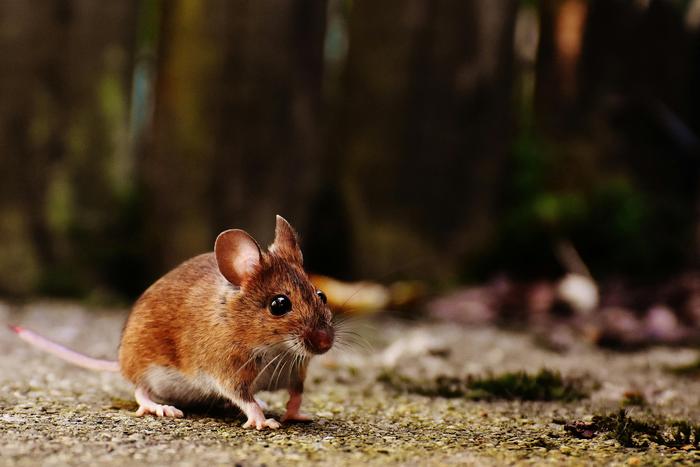
In a groundbreaking exploration of the sensory experiences of mice, researchers from Heidelberg University and Ludwig Maximilian University of Munich have uncovered crucial insights into how the brain processes touch. This study, published in the open-access journal PLOS Biology, reveals that the brain differentiates between active and passive touch, suggesting that our understanding of how touch operates has just begun to scratch the surface.
Active touch is described as the deliberate act of touching an object, akin to reaching out and grasping an item with the hand. In contrast, passive touch occurs when an external stimulus brushes against the body without the subject’s initiating action, resembling a gentle caress or an unexpected touch. Mice, like many other mammals, utilize their highly sensitive whiskers both for active exploration and for passive sensing. They navigate their environments by actively moving their whiskers around to inspect objects, while also experiencing the sensations of touch passively when objects come into contact with their whiskers.
This research focuses on the neuronal activity within the thalamus, a critical brain region responsible for processing sensory information from most modalities, excluding olfactory inputs. The scientists devised experiments where they either allowed mice to actively interact with objects or provided passive stimulation through puffs of air directed at their whiskers. This experimental design made it possible to observe differences in thalamic activity and enhance understanding of how these distinct types of touch are encoded in the brain.
Interestingly, the research found that the baseline neuronal activity in the thalamus was elevated before the mice engaged in active touch tasks. One finding indicated that a specific region of the thalamus responds to both active and passive touch stimuli. However, a different area referred to as the posterior medial thalamus displayed a pronounced response specifically to passive touch stimuli. This area demonstrated peak activity patterns when long intervals separated puffs of air, hinting at the possibility of heightened arousal or surprise in mice when receiving unexpected touches.
The study also suggests a biological significance behind the differentiation in processing active and passive touch. Touch serves as an essential mechanism for various survival-related behaviors, including foraging for food and social interaction, and the ability to distinguish between these two forms of touch could enhance an animal’s capacity to react swiftly to environmental changes or threats. For instance, passive touch is crucial for danger detection, allowing animals to sense potential predators from afar.
The researchers emphasized the implications of their findings by stating that the sensations from being touched and the sensations from touching an object can evoke similar primary responses in the brain. Nevertheless, the meaning and importance of these experiences vary significantly. For a mouse, whether it touches an object or is approached by an unknown stimulus can trigger fundamentally different responses and behaviors, underscoring the importance of this research in understanding the complexity of sensory processing.
Further, the emitted whisker movements provide an essential insight into how mice interact with their environment. Whiskers are highly sensitive appendages that not only help determine object location but also provide valuable tactile feedback. This study showcases the remarkable adaptive strategies of rodents, enhancing our appreciation for the sensory capabilities that underlie their navigation and emotional responses.
Ultimately, this research serves as a stepping stone toward unpacking the complexities of sensory perception in animals and suggests numerous avenues for future exploration. As we learn more about the mechanisms employed by various species to process sensory information, we broaden our understanding of the evolutionary implications of touch perception. Further research may reveal how these findings apply to other mammals, including humans, where the sensation of touch plays a vital role in daily interactions and emotional connections.
The field of neuroscience continuously enriches our understanding of animal behavior and physiology. As scientists delve into the enigmatic workings of the brain, studies like this one pave the way for new insights into sensory modalities. By understanding how touch is processed differently in various contexts, researchers may lay the groundwork for improving our comprehension of neurological disorders affecting sensory perception in humans, including conditions such as autism spectrum disorders and tactile defensiveness.
In summary, this study sheds light on the nuanced processing of touch in the mouse brain, establishing a foundation for future investigations that may bridge gaps in our understanding of touch and its implications across species. As these insights eventually become integrated into broader scientific and medical contexts, they hold the potential to transform how we approach sensory processing and related disorders in both animals and humans.
Subject of Research: Animals
Article Title: Active and passive touch are differentially represented in the mouse somatosensory thalamus
News Publication Date: April 8, 2025
Web References: PLOS Biology
References: Sumser A, Isaías-Camacho EU, Mease RA, Groh A (2025) Active and passive touch are differentially represented in the mouse somatosensory thalamus. PLoS Biol 23(4): e3003108.
Image Credits: Alexas Fotos, Pexels (CC0)
Tags: active touch versus passive touchHeidelberg University touch studyimpact of touch on brain functionmammalian touch differentiationmouse brain sensory processingneuronal activity in sensory processingPLOS Biology sensory researchresearch on touch sensitivitysensory experiences in mammalstactile feedback mechanisms in micethalamus role in touch perceptionwhisker sensory exploration in mice





